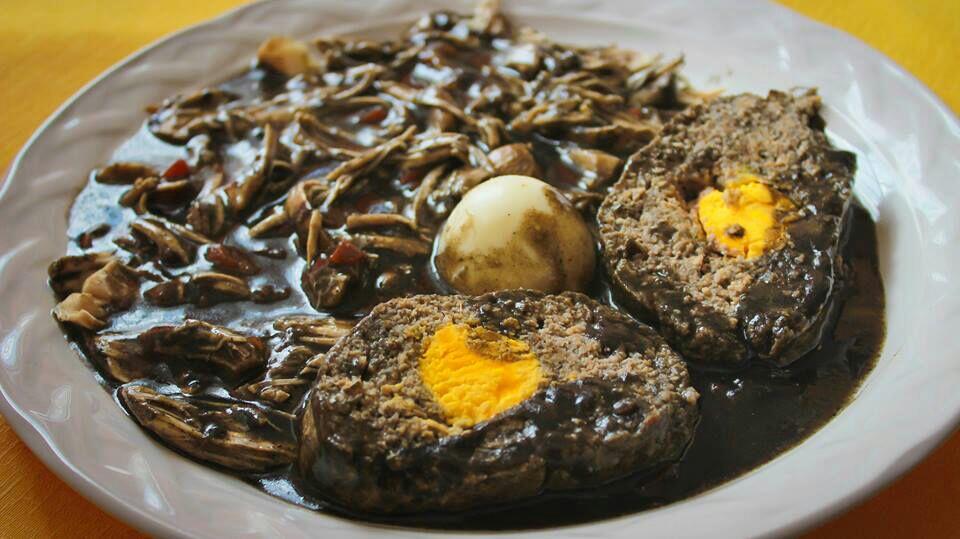Belize is a fascinating and inspiring country, and it’s only going to get more so as it continues to discover its rich heritage and wonderful natural resources. Here are 30 reasons why you should visit Belize, and why you won’t want to miss out on a once-in-a-lifetime experience.
Belize is a Central American country located off the coast of Guatemala and Mexico. It’s a country with a fast-growing tourism industry, with over three million tourists visiting each year. Think of it as a country that’s gradually becoming more popular and available, with new tour operators joining the fray every year.
Belize is a tiny country in Central America, with just over 500,000 people. It is known for its beautiful scenery and rich culture, and is widely considered one of the most beautiful countries in the world. Its location in the Caribbean is fantastic, with many of your favorite tourist destinations in North America only a short flight away.
Belize was tropical, lush, and full of excellent cuisine when compared to Oaxaca’s dry ochre desert. My journey to the nation was short, but it left an impression.
I’m not even mentioning the scars on my leg.
Belize was one of the last British possessions on the American continent, located on the northern outskirts of Central America. It has been a member of the British Commonwealth since its independence in 1981. It shares a border with Guatemala, although the two countries aren’t very friendly. Since 1821, Guatemala has claimed all or part of the territory that Belize has.
The short version of that long-running dispute is that Guatemala, which gained independence from Spain in 1821, claims that it agreed to recognize what was then British Honduras in 1859 in exchange for Great Britain building a road from Guatemala to Punta Gorda under a treaty signed with Great Britain in 1859. Guatemala declared the pact null and invalid in 1940, claiming that the road was never constructed and other economic help was never provided. Belize, on the other hand, claims that it was not the signatories to the treaty and therefore is not bound by it. Belize further contends that, under international law, Guatemala is obligated to uphold the pact even if the road is not built.
If you dare, there’s more here.
Note: My 6-year brand ambassadorship with G Adventures comes to an end on October 1st, and I visited Belize as part of my last trip.
G Adventures covered the cost of the trip as well as my transportation to and from Oaxaca. Optional activities such as the Iguana Sanctuary and the Blue Hole flight were paid for by myself.
Belize’s Brief History

Unbelievably lovely. (Sorry. It was unavoidable.)
As complex as the Guatemalan issue seems to be, Belize’s past is much more complicated, with pirates, buccaneers, and conquerors aplenty. Belize has a diverse and distinct population composition, despite its proximity to Central America. In addition to those of Spanish and Mayan descent, Belize has a large population of Creole (people of mixed African and British descent) and Garifuna (mixed-race descendants of West African, Central African, Island Carib, and Arawak people) with cultural similarities to Central America and famous Mayan ruins. Though brutal annihilation of indigenous culture and people was the tragic standard of colonial travels, the country’s early history reads like a Game of Thrones novel. Columbus, for example, *cough*.
Belize, according to the Encyclopedia Britannica, is a country in Central America.
is said to have sprung from the Spanish pronunciation of Peter Wallace’s surname, a Scottish buccaneer who may have established a colony near the mouth of the Belize River in 1638. It’s also likely that the name comes from the Mayan word belix, which means “muddy water” or “land facing the sea.”
There were the Maya before the Buccaneers — those’maritime marauders’ who came to the area in quest of wood and other treasures. The Maya built sophisticated city-states in the jungles during their heyday, from 600 to 900 AD, including Caracol and Lamanai in Belize. The Mayan empire began to crumble about 900 AD. Drought, according to new study, was the cause of the Maya’s demise. More about Tikal’s history may be found in my article here.
Although the Maya population fell, they did not entirely vanish. Mayan ancestors may still be found in Belize, frequently blended with Spanish heritage. The existing Mayan people fought back fiercely when the Spanish came in the 1500s, and the Spanish never gained a solid footing in the nation. Following the Colombian Exchange’s ideals, they did, however, introduce a slew of new illnesses to the area. The population began to dwindle, and many people relocated to the safer center of the nation.
British loggers known as the Buccaneers began arriving along the coast in quest of wood in the 17th century. They also utilized the Bay of Honduras as a base for attacks against Spanish trade, earning the moniker “British Baymen.” Spain still owned the area, but it didn’t matter since they assaulted the British, who battled back and, even if driven out, returned to regain mahogany access. In 1638, the Baymen village was designated as a British outpost.
At the same time, huge numbers of African slaves were imported into Belize. The Spanish desired control of the country, not just for the timber, but also as a port for human trafficking. Plundering and battles lasted for almost a century, until the Spanish made one final effort in 1798 to take Belize from the British. In the Battle of St. George’s Caye, they were defeated, and the area was firmly in British hands.
Please read the Lonely Planet History of Belize article for an overview of the period from 1798 to the present.
During the 1950s, there was a surge in calls for Belize to become independent. Belize became a self-governing colony of the United Kingdom in 1964, and it became an independent nation on September 21, 1981. Belize’s most significant sector is tourism, which is followed by sugar, bananas, citrus fruit, timber, and spicy sauce exports (so good).
30 Reasons to Visit Belize: Landscapes, Food & Wildlife
Are you still here? Good. I can’t simply post a picture essay without giving any background information about the nation.
Seascapes and Landscapes
This is an excellent place to begin.
On Caye Caulker, I saw the sunset on my last night in Belize.
Belizean cuisine

Only one restaurant told me they used flour to thicken their chicken stews, so it was quite celiac-friendly. Tamales and chicken or beef stews with rice were generally available throughout the nation. For the first time, I was able to taste Garifuna cuisine in Hopkins.
Fish cooked in coconut milk, called sere, paired with mashed plantain, called hudut, is my favorite Garifuna dish. So delectable!
The infamous Great Blue Hole
On Caye Caulker, activities were optional, and I chose to visit the Great Blue Hole, which had been a long-held goal of mine. Flights leave from Caye Caulker or neighboring San Pedro, but because I was already on Caye Caulker, I paid the $200 USD to join two other travelers on a flight.
Because I am unable to scuba dive, this was the next best choice. It was also precisely what I had hoped for: a little aircraft, breathtaking vistas, and the opportunity to witness an aerial perspective of a natural marvel I had read about for decades.
Views were foggy on the way out, but it cleared up on the way back.
The Great Blue Hole in Belize is unrivaled in terms of sinkholes. It is the world’s biggest natural sinkhole, located near Lighthouse Reef, about 100 kilometers (63 miles) from Belize City, and is part of the UNESCO-recognized Barrier Reef Reserve System.
Returning to Caye Caulker
Iguana Extravaganza

Despite the fact that my injuries aren’t the subject of this photo essay, I’d be negligent if I didn’t add some iguana pictures from my vacation.
For begin, during my stay on the Galapagos Islands, I was somewhat fascinated with iguanas. The land iguanas were especially entertaining to watch, joyfully hurling salt into the air and frightening all of the other iguanas in the area. The creatures were heaped on top of each other, and one would spew salt forcefully into the air, causing the half-dozen close to skittishly flip out, then settle back into rest. It occurred again and again, and I burst out laughing like a kid.
The iguanas in Belize were much more colorful, and since they were housed in a park, I was able to get up up and personal with them. One might argue that we were too near, since I still have claw scars on my leg from an iguana attempting to climb me like a tree, scaring the staff. Apparently, I have the unfortunate distinction of being the only human mauled in the whole history of The Iguana Project.
The best explanation we came up with was that we fed the iguanas leaves, and I was wearing a t-shirt that looked like leaves at the time.
Or iguanas despise me.
It’s all up to you.
Iguana the size of my head? CHECK!
MY ADVICE: DO NOT VISIT IGUANAS WHILE WEARING A SHIRT THAT LOOKS LIKE LEAVES.
YOU ARE MOST WELCOME.
When Mr. Iguana from the last photo thought I was a big leaf, I took this shot.
Oh, the snakes and tapirs!
While I am not a lover of spiders, I have no qualms with snakes. This was fortunate, since I was immediately draped with a huge snake upon entering the Belize Zoo and Tropical Education Center. There were no complaints; I was simply relieved it wasn’t a tarantula.
IS THIS THING ACTUALLY ON?
The zoo piqued my interest since the Jodi order of creatures is like follows:
- Tarsiers are a kind of tarsier that (the reason I went to the Philippines, and of course I went to Bohol and went nuts.)
- Llamas or alpacas (I went crazy when I discovered Shamarra Alpacas in New Zealand, but I also drove my family crazy with my excitement since there are a few alpaca farms near my father’s home in Quebec.)
- Wombats (Australia, to be sure.)
- Owls are a kind of owl that (Not yet, BUT ONE DAY)
- Tapir is a kind of tapir (Baby tapir are far cuter but I love their awkwardness at all ages)
- Harpy Eagles are a kind of eagle that lives in (mostly because they look like Sam the Eagle from the Muppets).
Not only did the zoo include a Harpy Eagle cage, but it also featured a number of lumbering tapirs.
BEHOLD:
TAPIR! to end on a high note!
More Information about Belize

This is a happy list of reasons why I loved my trip to Belize, including some of the locations that made it so special. I wanted to offer some extra reading for anyone visiting Belize, as I usually do. Longtime readers know how much I believe in studying as much as you can while traveling, and guidebooks and history books are a great place to start.
- My buddy Ali, who I met on this trip, wrote the Frommers Guide to Belize. She became so enamored with the area that she returned many times, living and writing there, and ultimately landing a contract for the guide book. It was a natural match for her since she is a nature and travel writer. Belize, as seen through the eyes of Frommers.
- The 2019 version of the Lonely Planet guide to Belize.
- Alan Twigg’s Understanding Belize: A Historical Guide
- Flavors of Belize, by Tanya McNab, and Gregory Arana’s I Belize You Can Cook Book are two books for foodies (never change, Gregory).
The second novel in Kimberly Fox’s Bad Boys on the Beach series, set in Belize, is for readers with more, um, scandalous tastes — I know you’re out there.
Do you like the shorter form? See this lovely piece on following hummingbirds in Belize’s rainforests.
This was a fantastic vacation to Belize, with everything from wildlife to sinkholes and plenty of delicious meals in between. My skin, which had been parched for months in Oaxaca, was overjoyed to be back in humidity for a few weeks.
REMEMBER, THIS IS NOT ONE OF THE 30 REASONS. It’s simply a Jodi picture with a cheerful grin. Thank you for a wonderful vacation!
I hadn’t spent much time in Central America or the Caribbean before, so I wasn’t sure how I’d like Belize. I fell in love with the cuisine and the laid-back atmosphere, was awestruck by the tropical seas, and felt that 10 days wasn’t long enough.
A few weeks ago, I went on vacation for the first time in years. It was a trip to Belize that I’ve been wanting to take for many years. Not only was it the first time I’d been to Belize, but it also was the first time I’ve been to Central America. Belize is a country worth visiting, but I may have realized it for the first time after my trip. It’s a country that deserves to be experienced.. Read more about resorts in belize and let us know what you think.




